If you’ve been thinking about looking for Chickasaw Plums you had better do it soon. Locally we are nearing the end of their season. They’re usually gone by the Fourth of July. Of course, the farther north you go the later they ripen. They’re by far our best local plum. Originally from Oklahoma, natives spread them around the South. We actually have four varieties of plums including the Flatwood Plum, the American Plum, and the Scrub Plum. Complicating that are several ornamental plums as well. There used to be thousands of plum species but mechanization of agriculture reduced them to a few dozen. The Chickasaw is fairly easy to identify because the leaves roll side-to-side some to make a trough and the leaf teeth have glands on the tip like little red caps that eventually fall off. And like all Prunuses it also has two little globs where the leaf meets its stem. You can see them and the caps with a five-powered hand lense. The plum’s kernel is generally considered not edible because it has a glycocyanide in it. If you crush a kernel you can smell the aroma of almonds, which is what cyanide smells like though between 25 and 40 percent of the population can’t smell cyanide. The natives discovered they could crush the seed, let it sit, and then cook it making it edible. Why would they go through all that work for a small seed? For the fat content. To read more about the Chickasaw plum go here.
I’ve been harvesting wild ivy gourds for about a month now. They should keep producing until cold weather hits. A relative of the cucumber they have a slightly tough outer skin and come in two varieties, non-bitter and bitter. Fortunately I’ve only found the non-bitter ones. I’ve been mixing them with some False Roselle leaves for a quick salad. In fact, this week I’m putting together a wild salad video using these two species and others… if the weather cooperates. There’s a good amount of rain in the forecast.
The False Roselle resembles a red maple and has tart leaves. For the salad I’m planning on using some betony root, fern stolons, cactus, and purslane. I’ll be tempted to use some music in the video which is always a headache because of rights claims. Even when you pay to use the music several companies will claim they have the rights and you have to defend against every claim even though you have bought the rights to use the music. Guilty ’til proven innocent. In my last video five different companies said they each owned exclusive rights to the same piece of music. I’ve had dozen of claims made but since I only use paid-for music I’ve won them all. Still it takes time and is a constant irritation. But, making the video should be a fun.
On the non-edible side the deadly Datura is blossoming. Called Angel’s Trumpet and Devil’s Trumpet, and everything in between, it’s an attractive toxic ornamental that sends several “tea” drinking kids to the hospital every year. It’s been resp0nsible for thousands of deaths, unintentional and intentional. In small amounts it is a hallucinogenic but the line between getting high and dying is very thin. Worse, the amount of toxic chemicals per plant can vary as much as five times so an amount that was not fatal for one person last time could kill several this time. It also leads to theft. When my mulberry tree was younger I trained it to “weep” by putting chips of marble in pantyhose and suspending them from the branches. As a training aid it worked very well. However, in the dark to a high kid the rock-weighted pantyhose looked like Datura blossoms. I would inspect my tree in the morning and find my pantyhose cut off…. I wonder how it tasted as tea?
Above I mentioned a five-powered hand lens. I usually buy mine from a coin or stamp shop. They cost $5 to $10 and have a large lens area. Collapsing also makes them easy to carry in the pocket. I used to own round metal and glass lenses of various powers that you could wear around your neck. But those didn’t work out well. First, I didn’t use the lenses that often to justify it presence around my neck. Also the lenses are so small I found they rarely let in enough light to see what one wanted to see. Hand lenses made to look at stamps and coins work far better and fit in the pocket nicely. At home I have two microscopes, a 10 and 30x dissecting scope for most of the work, and 60 to 2000x for mushroom identification.
I don’t like Salvia coccinea. Though attractive, it’s not edible and likes to crowd out my herbs. I’m forever removing it from flower pots. The other day I was about to rescue my tarragon from it when a bumble bee landed on a flower for a fueling stop. Bumble bees are native and solitary. They do the same pollinating job as honey bees, but I think of them more as independent contractors.
As the busy bumble buzzed from scarlet blossom to scarlet blossom I was struck by the thought that we need far more blossoms than bees, not only to keep the bumble bee flying but honey bees producing. Blossoms are important. Without blossoms bees would be worse off, and so would we. So I let the salvia be even though it is a species that made me ill once.
Here in Florida the third most common nectar plant is Spanish Needles, an edible. The second most common is the Saw Palmetto. While its fruit is edible it is considered more an herbal medicine. The most common nectar genus is citrus. The Saw Palmetto and Spanish Needles got to their positions naturally, by offering something bees want or need thus the plants succeed in reproducing more than other species. Citrus is king only because humans intervened.
In our self-centered, brain-driven view we, of course, say citrus is serving us. But Mother Nature does not have to be conscious to succeed. It is not unreasonable to say citrus is using us and we are serving it. Consider:
Citrus is a non-native that has managed in a very short time to take over a rather large amount of land. That sure beats the old way of moving slowly on its own over millennia. Clearly citrus won by giving man something he wants, just as the Salvia coccinea gives the humble bumble something it wants which is spread its pollen around. I’m sure if the bumble bee had an imagination it would think of itself as man does, in charge of the flower. But the flower is clearly getting the bee to do its bidding. And we are doing what citrus wants. The tail is wagging the dog, so to speak, and this view is not limited to plants.
There are, for example, some 40 million dogs in the United States. There are, however, only some 10,000 wolves. Dogs, as a group, are clearly doing something wolves are  not: They are giving man what he wants, or needs. As a group dogs are wildly more successful compared to their canine cousins. So who is manipulating whom? Just as the may bee think it is the prime agent with the blossom we think we are the prime agent involving dogs. But maybe… just maybe… it’s the dogs who’ve got us figured out, just as the citrus does, and yes, even the Salvia coccinea. As fascinating at as feral wolves may be are they are losing like other species because they are not giving humans, or any thing else, what they want. Their independence might be the death of them.
not: They are giving man what he wants, or needs. As a group dogs are wildly more successful compared to their canine cousins. So who is manipulating whom? Just as the may bee think it is the prime agent with the blossom we think we are the prime agent involving dogs. But maybe… just maybe… it’s the dogs who’ve got us figured out, just as the citrus does, and yes, even the Salvia coccinea. As fascinating at as feral wolves may be are they are losing like other species because they are not giving humans, or any thing else, what they want. Their independence might be the death of them.
Because we humans are conscious we tend to put ourselves in the driver’s seat, the primacy position. But if you look around, non-humans seem to be winning…. citrus, lawn grass, dogs… We are taking care of them not them us. And let’s not even get into the issue of calculating cats…. Many plants and animals offer us something that makes us work just like the bee going flower to flower. So, who is manipulating whom?
Classes this week are easy to list: I will be in Jacksonville Saturday and Sunday. Saturday’s class is large, Sunday’s is small. If you want to switch or sign up Sunday is the better choice unless it has to be Saturday. Details are here.

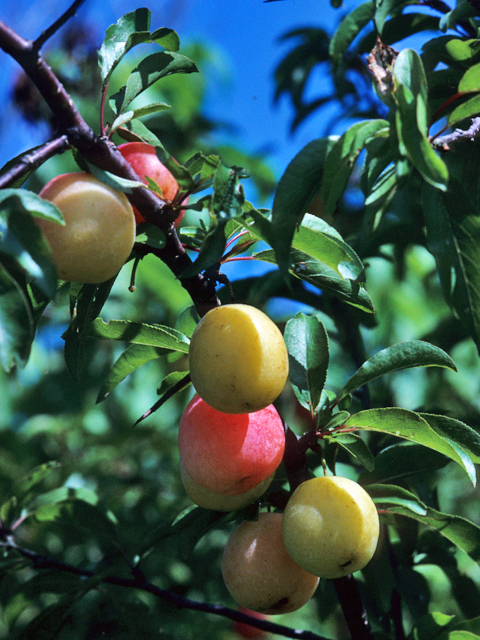
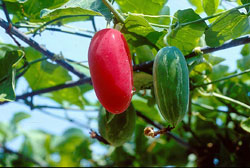
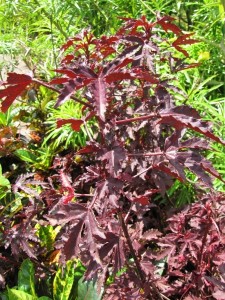
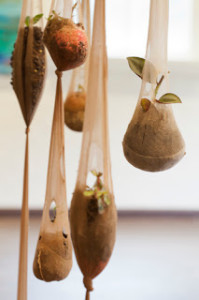

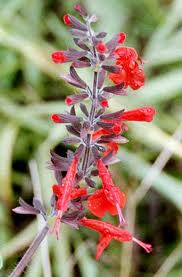
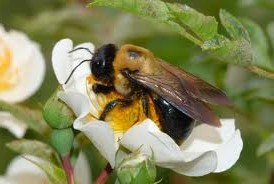
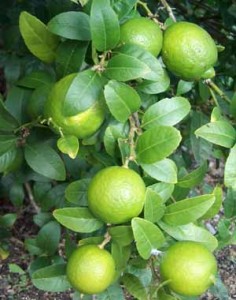

Really good post this week……….. Thank you
I’m really looking forward to that salad video. And, I’m assuming you won’t be dumping store-bought dressing on it. Sounds like fun.
And here I thought that was your own music I heard on some videos. Why not use your own stuff?
I did use some of my music on some videos.
There have been increasing sightings locally of both mountain lion and now a canine species larger than the common coyote. The mountain lion has been confirmed through kills and photos but the large canine has yet to produce itself beyond word of mouth though authorities have whispered of wolves back in the northern hills of the tallgrass prairie.
Ditto the really good post this week. Clear, to the point, and very informative. I couldn’t help but chuckle reading the Deadly Datura portion, though it is a very serious poison and IF you live through it, described as the worst “high” known to man (three days of blindness comes to mind) and will never, ever do it again. (Not my experience but someone close.) Thanks
Datura is mean stuff :atropine(mostly responsible for the visual fx),scopolomine(on patch for sea-sickness), hyoscyamine(involuntary smooth muscle depressant) my neighborhood had “Gabriell’s trumpets” more of a vine than shrub,8-10inch yellowflower with five purple stripes on the inside of the petals (1 ea.)slightly fading yellow to white petal frills. I once was tricked into ‘Mushroom tea’ w/ this as a substitute- I talked to people not there, my buddy riding on my handle-bars said to an imaginary “third passenger” flung his arm up “Roy, gimme my jacket” we endoed with curb contact !! wonder if it’s still there?
sort of a catatonic state: -did I SAY that or THINK I said it???? Trip is the descriptive word, not pleasant-“EVIL” … and sure enough I think one kid did die (dk-different highschool) jimson weed and any Datura varies in alkaloid content depending on soil nutrients N,NO3,S… ( i assume it would rather attract bees with fragrance than prevent herbivory[investment decisions based on experience/hereditary exp]) silly humans huh? I hope Datura outlives the (most of the )human species ! I wonder how it may ‘ve been used as a “medicine” by early humans…. Deene ? I’ve had no real ethnobotany . Thank you !
plants are the classic example of survival of the laziest, they even have us do sex for them, pollenating them since they are too lazy to do that themselves